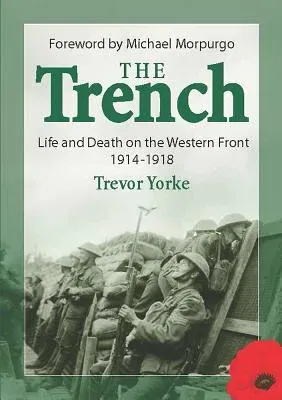The horrors of the First World War scarred an entire generation at the
beginning of the twentieth century. Now, one hundred years later, we are
asked to reflect upon it and remember what a disastrous episode of
history it was.
During the next four years many thousands of people, especially the
young in school parties, will visit the battle sites of the Western
Front in France and Belgium, with their museums, their cemeteries,
memorials and trench reconstructions. It was the trenches that were the
setting for so much of the carnage.
This book offers a brief, straightforward, illustrated history of the
First World War in some 96 pages. In particular, it explains the
trenches and what it was like to live and fight in them.
Using his own diagrams, illustrations, and maps, author Trevor Yorke
explains the architecture of them, with their command posts, sally
points, tunnels, machine gun nests, duck boards, and sleeping billets.
There are chapters to explain tactics, weaponry, and daily life. There
are special features on the introduction of new weapons of war, such as
tanks, early airplanes, and the first use of poison gas.
These can bring home to us a real understanding of the unique inhumanity
of the war, and why the dates 1914 -1918 require all generations of
today to remember and learn from them. As Michael Morpurgo says in his
Foreword: 'As we begin to mark the centenary of the First World War, we
should honor those who died, most certainly, and gratefully too, but we
should never glorify. During these next four years of commemoration we
should read the poems, the stories, the history, the diaries, visit the
cemeteries -German cemeteries as well as ours - they were all sons and
brothers and lovers and husbands and fathers too.'

